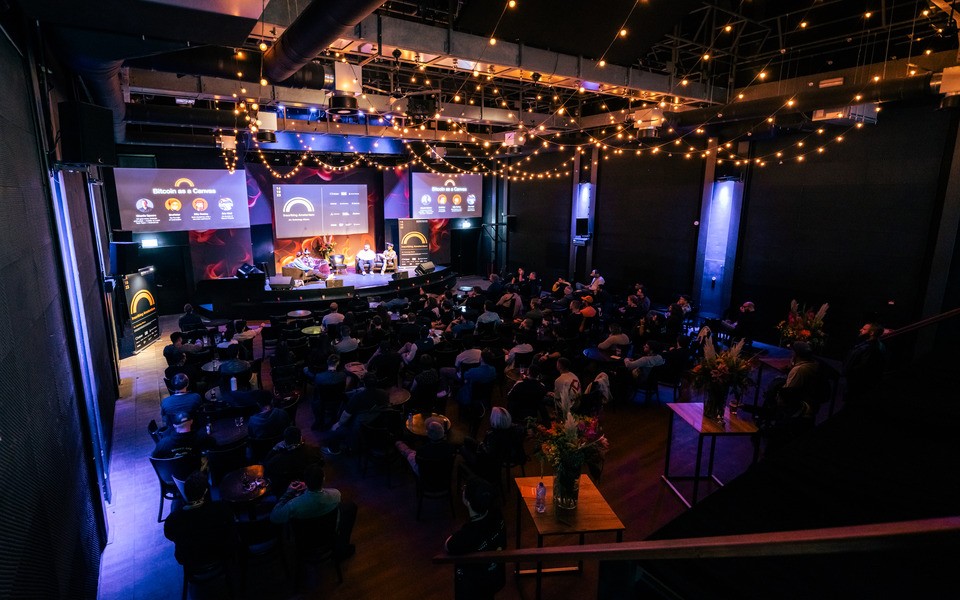Back
Oct 19, 2023
•
General Wallet Use
•
8 min
The very first Bitcoin Amsterdam took place at the Rozentheater almost a decade ago. It was one of the earliest events that celebrated Bitcoin and the Bitcoin ethos.
Fast forward to 2023 and the Rozentheater was, once again, the site of another significant gathering for the Bitcoin community.
The Leather team attended Inscribing Amsterdam on October 14 to commemorate one of the most significant milestones for Bitcoin in years – the Ordinals protocol. Ordinals have breathed new life into the Bitcoin community and given the wider crypto space a glimpse into what is possible on the world’s oldest blockchain.
And the Ordinals story is far from over. That was our biggest takeaway from Inscribing Amsterdam. Now, we’re more confident than ever that a brighter future awaits on the Bitcoin blockchain.
How Bitcoin Ordinals Work
The Bitcoin Ordinals protocol was launched in January by Casey Rodarmor. Back then, he introduced what was known as Ordinal theory – the process of assigning numbers to each satoshi (sat), the smallest denomination of Bitcoin. Sats were numbered in which they were mined, which allowed users to track individual sats as well
But what made Ordinals take off was that each sat could be inscribed with data, be it text, audio, video or images. Not only that, but these inscriptions took the form of a Bitcoin transaction, meaning that you essentially “minted,” so to speak, data directly on the Bitcoin blockchain itself.
This was a significant milestone for the Bitcoin community because the Bitcoin blockchain can, by design, be hard to scale and build on top of. While the Bitcoin ecosystem has developed a number of scaling solutions to circumvent these challenges – Bitcoin L2s being one of them – builders are still finding ways to incorporate everything from NFTs to smart contracts on the Bitcoin base layer.
So in many ways, Ordinals effectively demonstrated that there were avenues to develop on the Bitcoin L1 itself. In weeks after the protocol’s launch, Ordinals NFT collections sprung up and users clamored to “mint” their own inscriptions on the Bitcoin blockchain (though let’s be clear, inscriptions generally are digital artifacts, which differ from NFTs). Now, ten months after the launch of Ordinals, developers are also experimenting with everything from recursive inscriptions to the BRC-20 token standard.
The result? According to Galaxy, Bitcoin has actually become the third most popular network for trading NFTs and remains the third most popular network for digital collectible activity.
The Ordinals Community, Then and Now
More recently, there has been concern that excitement around Ordinals may be dying down. Reports that inscription transactions have decreased on marketplaces has been the largest driver of this narrative.
But what they don’t take into account is how inscriptions have still accounted for a significant fraction of transactions on Bitcoin. For example, inscriptions still made up almost half of all transactions on the Bitcoin blockchain in September.
Not only that, more Ordinals-related projects are still popping up. In fact, if you were at Inscribing Amsterdam, you might’ve also had trouble keeping track of the number of collections and projects that are in the works (a few are listed in this thread). What’s more, the emergence of parent child inscriptions and rare sats have also inspired developers to explore what else they can create with Ordinals.
That is what made Inscribing Amsterdam such a crucial event for the Bitcoin community. As much as it was a gathering for artists and builders to showcase their work, it was also a gathering for the community to witness how far – and how much farther – they could take the Ordinals protocol.
Remembering Inscribing Amsterdam

We are, truthfully, still in the early stages of unpacking what can be done with Ordinals. In his panel, “Beyond the Building Blocks: Building Ordinals Infrastructure,” Leather General Manager Mark Hendrickson stated that he was “very interested in the question of how we, as a community, can make Ordinals programmable.”
Doing so, he continued, would “increase the scope of addressable use cases and reduce our reliance on centralized indexers.”
And that’s just one of the many questions conference speakers and attendees had about what the Ordinals landscape could look like in the coming years. In many ways, conference attendees might’ve even felt that the featured “Amsterdam Blooms” collection was fitting, honoring Bitcoin’s past while acting as a symbol for ecosystem's “new beginnings.”
We were thrilled to try and answer some of these emerging questions alongside our friends at Taproot Wizards, OnChainMonkey and our Ordinals partners who have made their mark on the community. Ultimately, the Ordinals ecosystem is still in its early stages but the community, from what we could see, is dedicated to taking this crucial development to the next level.
Leather: A Gateway Into Ordinals
Ordinal support has been a priority for Leather. Since its January launch, inscriptions have already inspired a number of new protocols and technologies, along with accounting for a significant share of Bitcoin transactions. This means that users need a Bitcoin wallet that can keep up with these changes.
After all, users’ first interactions with any development in the Bitcoin ecosystem is through their Bitcoin wallet. Without a secure and versatile Bitcoin wallet, users risk missing out on the iteration of Bitcoin Web3 and the biggest projects that will come to define our ecosystem for years to come.
Erin Redwing, CEO of Inscribing Atlantis (organizer of Inscribing Amsterdam) has said that the event will serve as the crucial “origin of many foundational projects and collaborations.” We couldn’t agree more, and are excited to see how the builders and creators we met over the weekend will usher in a new era for Ordinals and Bitcoin as a whole.
Connect to web3 applications built on Bitcoin with the Leather browser extension. Install Leather – the only wallet you need to tap into the multilayered Bitcoin economy – today.
